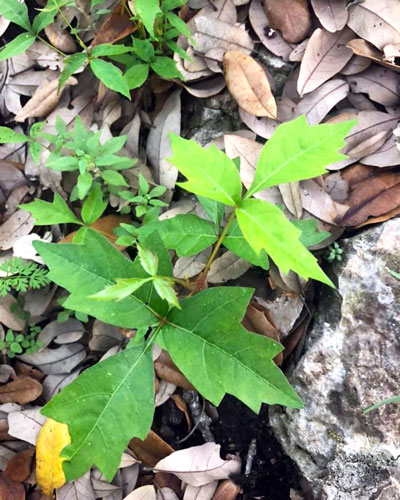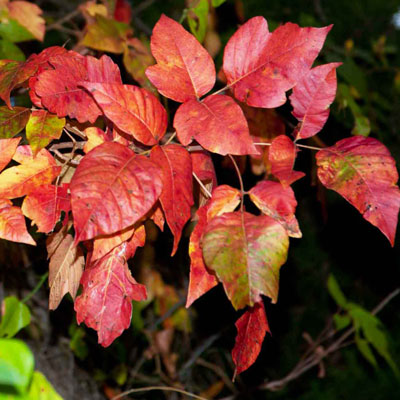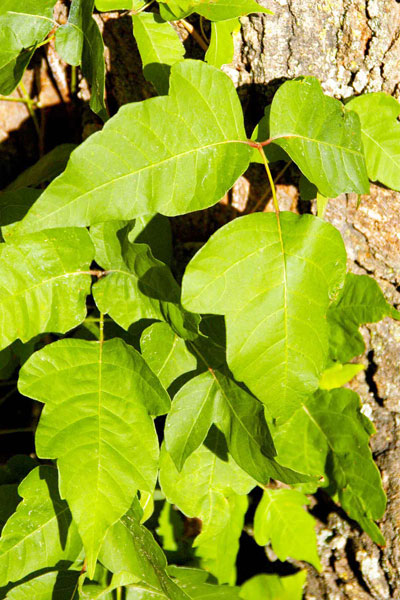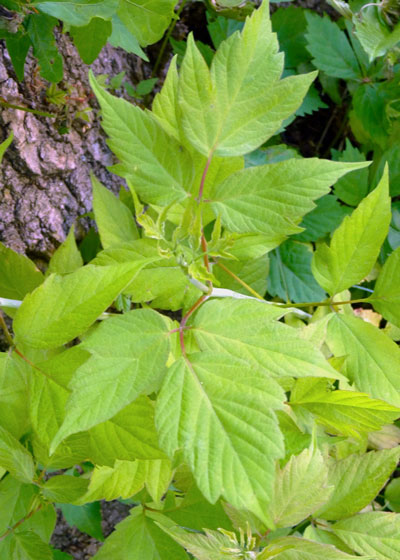Poison Ivy Questions Have Started
It seemed so harmless. That little seedling that came up in the flowerbed. Fact is, you may not even remember pulling it out a day or two earlier. Then you wake up in a frenzy with welts and itching.

Sound familiar? I believe you’ve found our little friend with the big name Toxicodendron radicans. You may know it more simply as poison ivy.
Some people refer to it as “poison oak” or “poison sumac,” but botanists will tell you that we don’t have those here in Texas. We have poison ivy, but it doesn’t really matter. They’re all sisters out of the same plant genus anyway.
The things you’ll need to remember…
• Poison ivy is a vine, but it can also hold itself upright when it grows out in the open. In that environment it can grow to be waist high or taller.
• It is a perennial vine, which means it is a woody plant that comes back with new leaves on the old stems every year.

• Poison ivy is deciduous, meaning that it loses its leaves in the fall and that its stems will be bare all winter. But they’ll still be capable of causing the allergic reactions.
• Be sure you can identify poison ivy, even as small seedlings, before you go out into the garden to work. Teach your young children as well.

• Poison ivy has three leaflets per leaf. In other words, when a leaf falls to the ground in the autumn, it will consist of three leaflets. That leads to the old saying of “Leaves of three, let it be.”
• As mentioned, all parts of the plant have the oils that can cause the allergic reaction – roots, stems, leaves and berries.
• We are all susceptible at some point in our lives. Some people are always at risk. Others when they’re coming down with a cold or other illness. We must assume that we are allergic.
• Wear disposable gloves, long pants, closed shoes, socks, long-sleeved shirts, hat and face protection while you’re working with poison ivy. Do not touch your skin with your gloves, and do not touch cutting surfaces with your hands.
• Use a pitchfork or rake to pick up cut debris. Do not use your hands. Pile it to burn or dry for a long period of time.
• Fumes from burning poison ivy can cause allergic reaction.
• Oils from the plants can be on the clothes you load into the washer.
• Take a long, soapy shower immediately after you work around poison ivy.
• If you develop a rash, talk to your pharmacist about the best medicines. If you have a serious reaction, talk to your doctor.
To eliminate poison ivy:
• Where you have a clear shot at it spray the vines with a broadleafed weedkiller containing 2, 4-D. Read and follow label directions carefully. You must not spray this herbicide, available in many brands, up into other trees and shrubs as it will kill them as well.

• Where the poison ivy is ascending into trees, take a long-handled axe or saw and cut through the ivy’s trunk near the ground line. Next, come up 18 inches higher and cut completely through its trunk a second time. Use the head of your axe to pop that 18-inch “log” out of the way. The top of the vine will die and remain in the tree. Do not try to pull it out. It will dry and gradually fall out of the tree at which point you can pick it up. In the meantime, use the axe to macerate the stump of the ivy, then pour the broadleafed weedkiller onto the stump at full strength and let it soak into the wood. That will prevent resprouting.
Plants that look like poison ivy…
You may find a couple of common plants fool your eyes into thinking you’re seeing poison ivy when really you aren’t.


